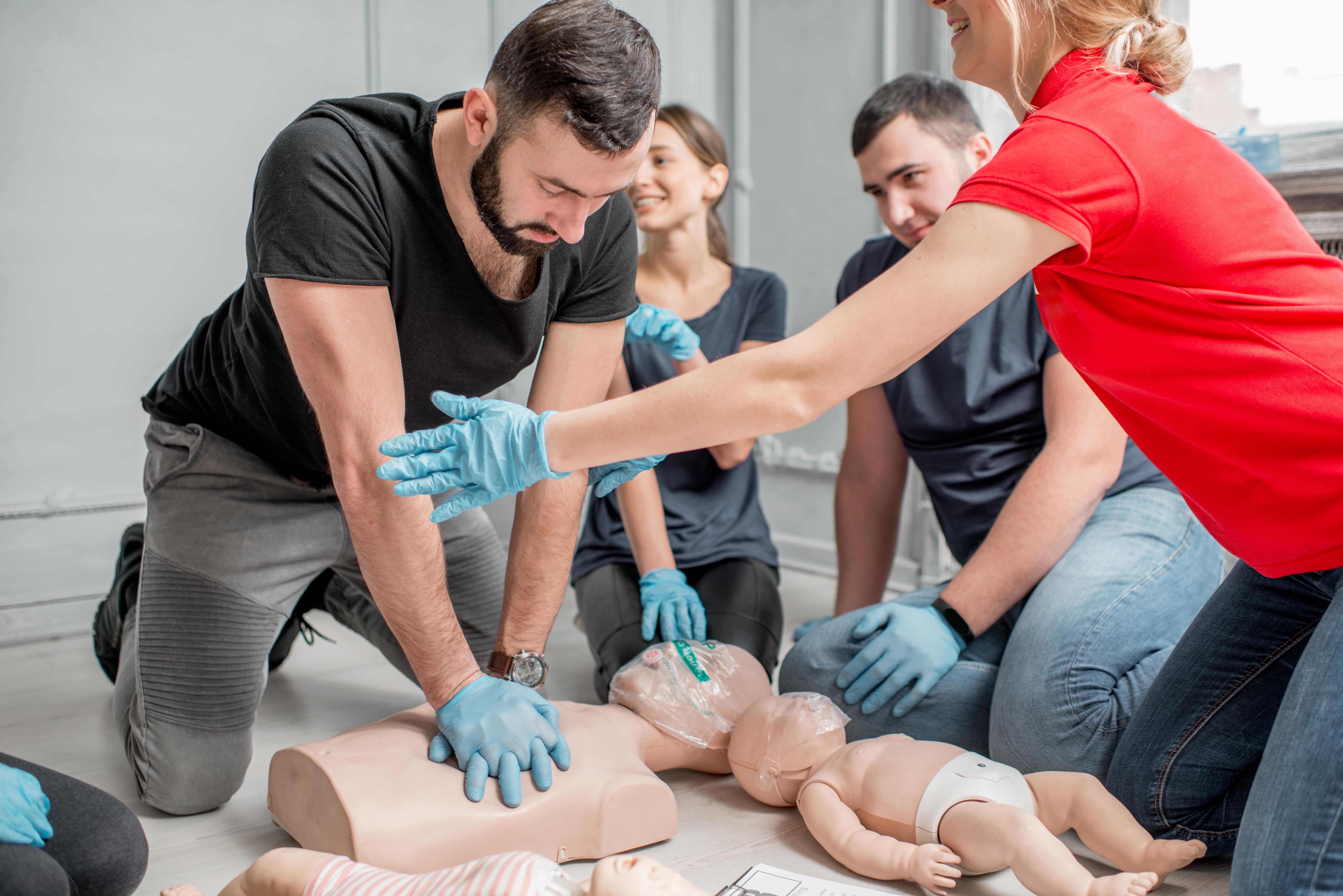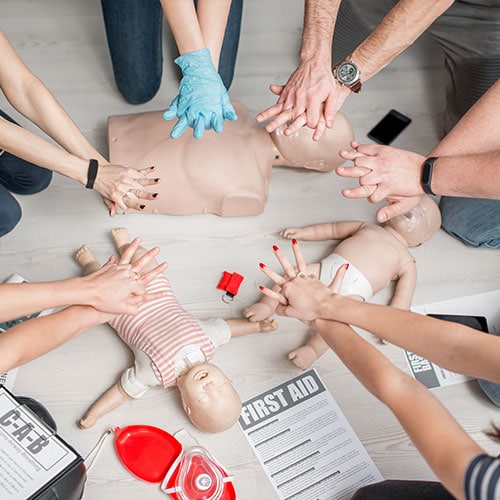Introduction
In our quickly transforming world, the value of emergency treatment can not be understated. Whether in a business atmosphere, educational institution, or at home, understanding exactly how to react successfully throughout a medical emergency can conserve lives. Nonetheless, with excellent responsibility comes the need for recognizing the laws regulating emergency treatment practices. This short article aims to supply an extensive review of first aid regulations that every supplier ought to understand. We will explore different facets-- from important certifications to the subtleties of CPR programs-- guaranteeing you leave furnished with expertise and confidence.
Table of Contents
Understanding Emergency treatment Regulations- 1.1 Relevance of First Aid Training 1.2 Legal Implications of First Aid
- 2.1 Sorts of First Aid Courses 2.2 Picking the Right Training Course for You
- 3.1 Recognizing CPR Techniques 3.2 Value of CPR Certification
- 4.1 Benefits of Combined Training 4.2 Exactly how to Locate an Integrated Course
- 5.1 That Requirements an Emergency Treatment Certificate? 5.2 Credibility and Renewal of Certifications
- 6.1 National Safety Council (NSC) 6.2 American Red Cross Standards
- 7.1 OSHA Guidelines for Office Safety 7.2 Employer Duties in Emergency Treatment Training
- 8.1 Standard Steps in Emergency Response 8.2 Role of a First Responder
- 9.1 Common Misunderstandings about First Aid 9.2 Overcoming Barriers to Training
- 10.1 Virtual Knowing Opportunities 10.2 Advancements in Emergency Treatment Equipment
Understanding Emergency treatment Regulations
Importance of Emergency treatment Training
First aid training is not just a valuable skill; it's an essential part of our social fabric that encourages people to act decisively during emergencies.
- Life-Saving Skills: Recognizing fundamental first aid techniques can dramatically boost survival rates in emergencies. Confidence Building: People learnt first aid commonly feel much more positive and prepared when confronted with medical situations.
Legal Effects of First Aid
Understanding the legal framework bordering emergency treatment is essential for any person giving assistance during emergencies.
- Good Samaritan Laws: Most states have regulations shielding those who provide help voluntarily from legal responsibility, as long as their activities are reasonable and intended to help. Negligence Considerations: If a qualified service provider acts recklessly or fails to perform required life-saving treatments, they can deal with lawful consequences.
First Help Courses Overview
Types of Emergency treatment Courses
There are numerous sorts of first aid courses readily available, each customized to meet different needs:
- Basic Life Support (BLS): Perfect for health care experts requiring advanced skills. Standard First Aid: Covers important abilities appropriate for nonprofessionals and non-medical personnel. Advanced Cardiac Life Assistance (ACLS): Targets doctor collaborating with critically ill patients.
Choosing the Right Program for You
When choosing a program, consider your goals and scenarios:
- Are you looking for certification for workplace compliance? Do you need abilities particular to childcare or senior assistance?
Researching neighborhood providers can aid simplify your choice based upon location and solutions offered.
CPR and Its Significance
Understanding mouth-to-mouth resuscitation Techniques
Cardiopulmonary resuscitation (CPR) is just one of one of the most vital abilities discovered in any emergency treatment course:
- Compression Technique: Effective chest compressions can maintain blood streaming to crucial body organs up until expert aid arrives. Rescue Breaths: While less stressed now because of new standards, rescue breaths stay an indispensable component of standard mouth-to-mouth resuscitation training.
Importance of CPR Certification
Obtaining accreditation with identified companies makes certain competency in executing CPR:
- Many companies call for current accreditation as component of their security protocols. It enhances total self-confidence when encountering potential heart emergencies.
First Help and mouth-to-mouth resuscitation Program Integration
Benefits of Combined Training
Taking a combined emergency treatment and CPR program offers numerous benefits:
- It improves training by covering both areas simultaneously. Participants obtain thorough knowledge suitable across numerous scenarios.
How to Locate an Integrated Course
Searching for incorporated training programs needs some tactical planning:
- Look for neighborhood recreation center or health centers providing such courses. Online platforms might additionally provide digital alternatives tailored toward active professionals.
First Aid Certification Requirements
Who Demands a First Aid Certificate?
Various industries demand accreditation from personnel:
- Educational establishments frequently need instructors and instructors to hold legitimate certificates. Healthcare settings necessitate ongoing training amongst personnel members.
Validity and Revival of Certifications
Most certifications have expiration days:


- Regularly renewing certifications makes certain that suppliers remain current with present practices.
Regulatory Bodies Governing First Aid
National Safety and security Council (NSC)
The NSC plays a crucial duty in establishing standards for security training throughout the USA:

- They provide sources, products, and support for both instructors and students alike.
American Red Cross Standards
The American Red Cross provides comprehensive training programs straightened with national standards:
- Their educational program includes hands-on method, making certain participants create useful abilities along with theoretical knowledge.
Workplace Laws on First Aid
OSHA Standards for Office Safety
The Occupational Safety and security and Health And Wellness Administration (OSHA) details assumptions pertaining to work environment precaution:
|Requirement|Description|| -------------|-------------|| Availability|Employers must make sure accessibility to ample first-aid sources in all times|| Trained Employee|Designated employees should be trained in basic first aid|
Employer Responsibilities in First Aid Training
Employers birth substantial duties concerning employee safety:
- Providing ideal training sessions regularly assists minimize work environment injuries.
Emergency Action Protocols
Basic Action in Emergency Response
An effective emergency action procedure can substantially improve end results throughout dilemmas:
Assess the scenario safely. Call emergency situation solutions if needed. Provide essential care until expert help arrives.Role of a First Responder
First -responders play an indispensable function within emergency scenarios by supplying prompt aid while waiting for innovative clinical intervention:
- Their prompt activity typically makes a substantial distinction between life and death scenarios.
Challenges in Implementing Emergency treatment Training
Common Misconceptions about First Aid
Misunderstandings bordering first aid can hinder reliable reactions during emergencies:
Myth vs Reality Table
|Misconception|Fact|| ----------------------------------|------------------------------------------|| Only healthcare professionals should administer first aid|Anybody can learn basic strategies|| Making use of an AED is risky|AEDs are developed for public use|
Overcoming Obstacles to Training
Several obstacles exist that may hamper individuals from going after emergency treatment courses;
Key Barriers
- Time Restrictions: Busy routines make it tough for many people to find time for training sessions. Financial Limitations: Expense may discourage interested prospects from getting involved; nonetheless, many organizations provide subsidized programs or gives especially focused on providing monetary relief.
Future Trends in First Aid Training
Virtual Learning Opportunities
With innovation progressing rapidly, on the internet platforms have gotten appeal amongst students seeking flexible alternatives;
- Real-time simulations allow participants to involve actively without requiring physical existence at conventional places; This method enhances availability while accommodating diverse learning styles!
Innovations in First-Aid Equipment
Emerging technologies are transforming exactly how we approach first-aid preparation;
Examples Include
- Smart Bandages-- equipped sensing units keep an eye on recovery progress! Mobile Apps-- providing assistance based upon customer input pertaining to signs and symptoms!
FAQs Regarding Understanding First-Aid Regulations
Q1: What is consisted of in a typical first-aid course?
A regular first-aid training course covers subjects such as wound care, crack administration, shock therapy, choking interventions, along with CPR methods customized towards different age groups!
Q2: Exactly how commonly do I need to restore my mouth-to-mouth resuscitation certification?
Most organizations recommend restoring your accreditation every two years; remaining knowledgeable makes certain efficient reactions during emergencies!
Q3: Can I take an online first-aid course?
Absolutely! Several trusted organizations offer online choices Visit this website permitting learners adaptability while maintaining top notch standards through interactive content!
Q4: Is there any type of age requirement for taking these courses?
Normally talking-- no! Children aged 10 or older can get involved under parental guidance; nevertheless-- it's recommended that adults accompany them throughout lessons!
Q5: Just how do I choose in between different service providers supplying comparable courses?
Investigate reviews/testimonials from previous attendees along with inspecting accreditation condition before making decisions; this will certainly guarantee top quality education provided satisfies industry standards!
Conclusion
In summary-- making good sense outta policies surrounding essential areas like 'first-aid' & & 'CPR' is fundamental not only professionally yet personally too! As seen throughout this short article-- numerous elements add in the direction of making sure proper responsiveness throughout clinical emergency situations consisting of understanding needed accreditations-- as well as recognizing difficulties encountered whilst carrying out effective programs within community/workplace setups alike! By investing time/resources into gaining effectiveness via relevant courses-- you'll be better positioned than in the past-- should destiny provide its changability knocking at your door! Always bear in mind-- the ability you possess today might potentially conserve another person's tomorrow!